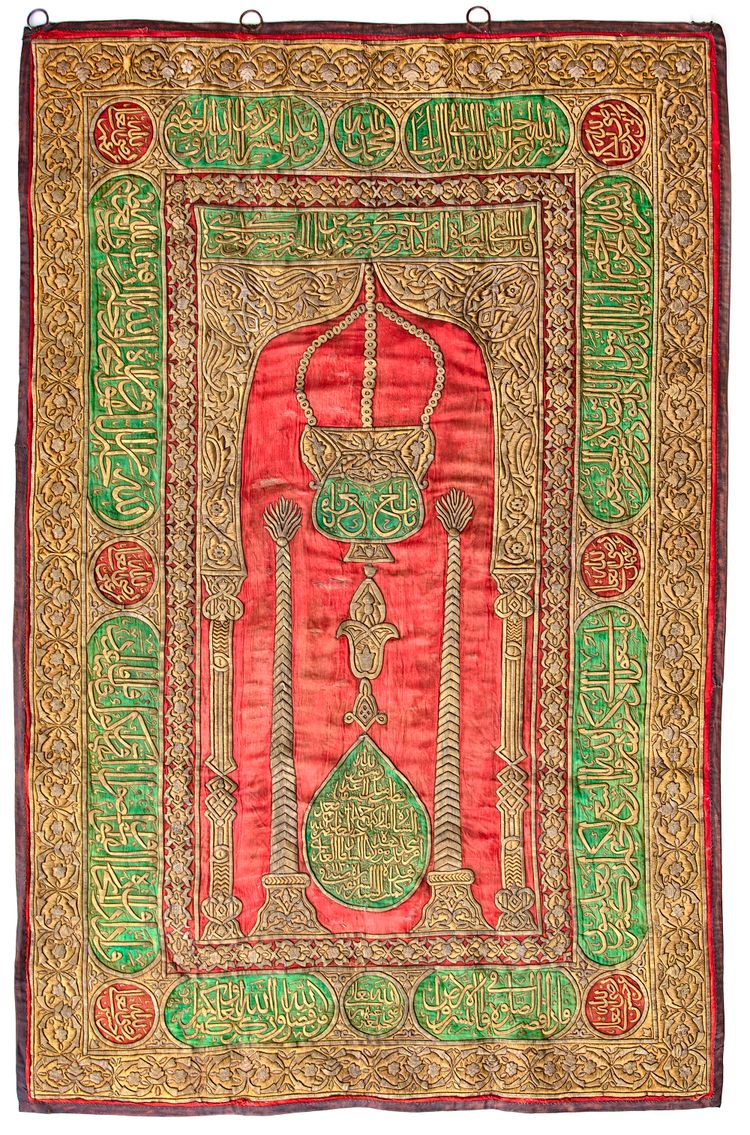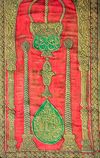Lot 360 AN OTTOMAN METAL THREAD EMBROIDERED HANGING SITARA FROM MASJID AL NABAWI AT MEDINA, TURKEY, DATED 1130 AH/1717 AD
Of rectangular form, the red field with applied thick silver and gilt embroidery forming calligraphic cartouches surrounding an inner mihrab with columns and mosque lamp, with a calligraphic panel on green silk ground above. The outer border is embellished in gilt wires with dense design of floral motifs.
260 by 175 cm.
The inscription in the top cartouche on green ground is a hadith of the Prophet 'the area between my grave and my minbar is one of the gardens of Paradise'. The inner border containing cartouches enclosing verses from the Quran Surah Al-Jumu'ah v.3-v.8 . in the six roundels are the names Abu Bakr, 'Umar, 'Uthman, Ali, Hasan and Hussain. on red silk ground. The hanging lamp, in mirrored calligraphy, reads 'O the Opener [of all the gates], in the tear-shaped hanging between the columns on green ground read amara bi-'amal hadha al-sitara al-mubaraka, mawlana al-sultan Ahmed khan, 'Our Lord, Sultan Ahmed III ordered this blessed covering (sitara) to be made' in 1130 AH, therefore refer to Ahmed III (r.1703-1700 AD).
The Masjid al-Nabawi (Mosque of the Prophet) in Medina is, as the final resting place of Muhammad, the second holiest mosque in Islam. The interior walls of the Shrine of the Prophet Muhammad (rawda) within the mosque were historically covered in textiles similar to those of the Kaaba in Mecca. However, unlike the Meccan Kiswa, they were changed considerably less frequently than once a year, and were often made in Ottoman Turkey rather than Egypt.





